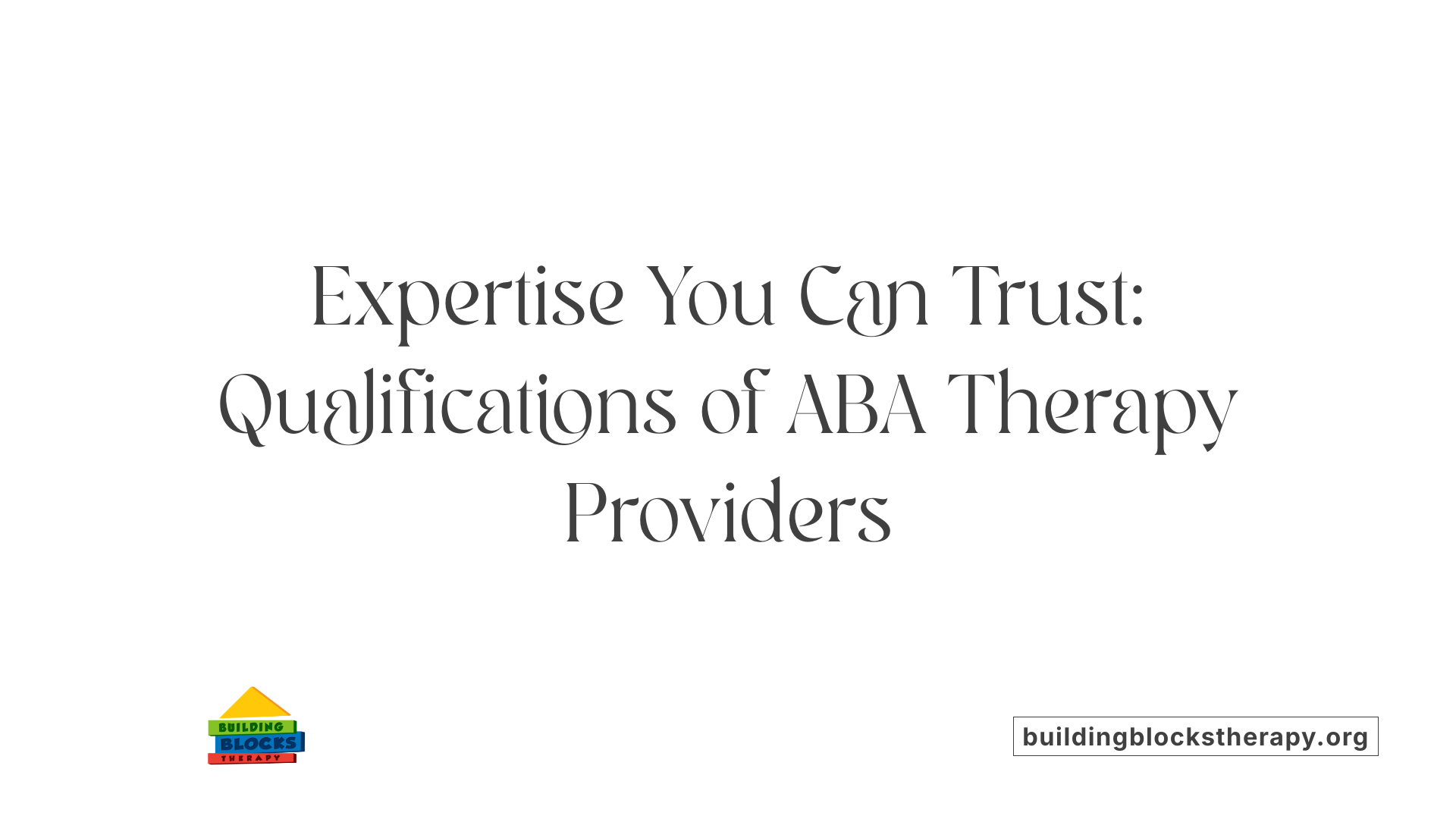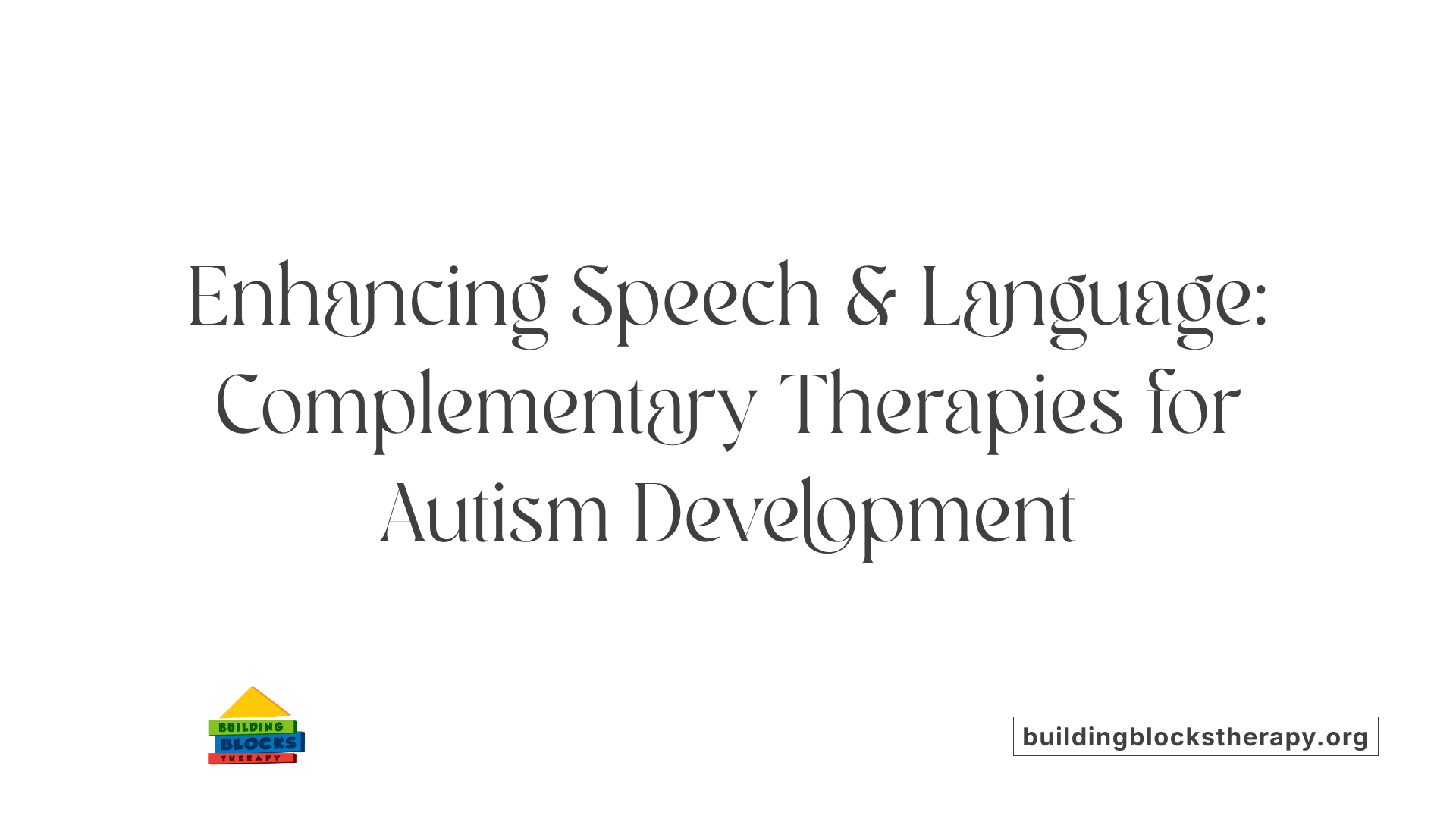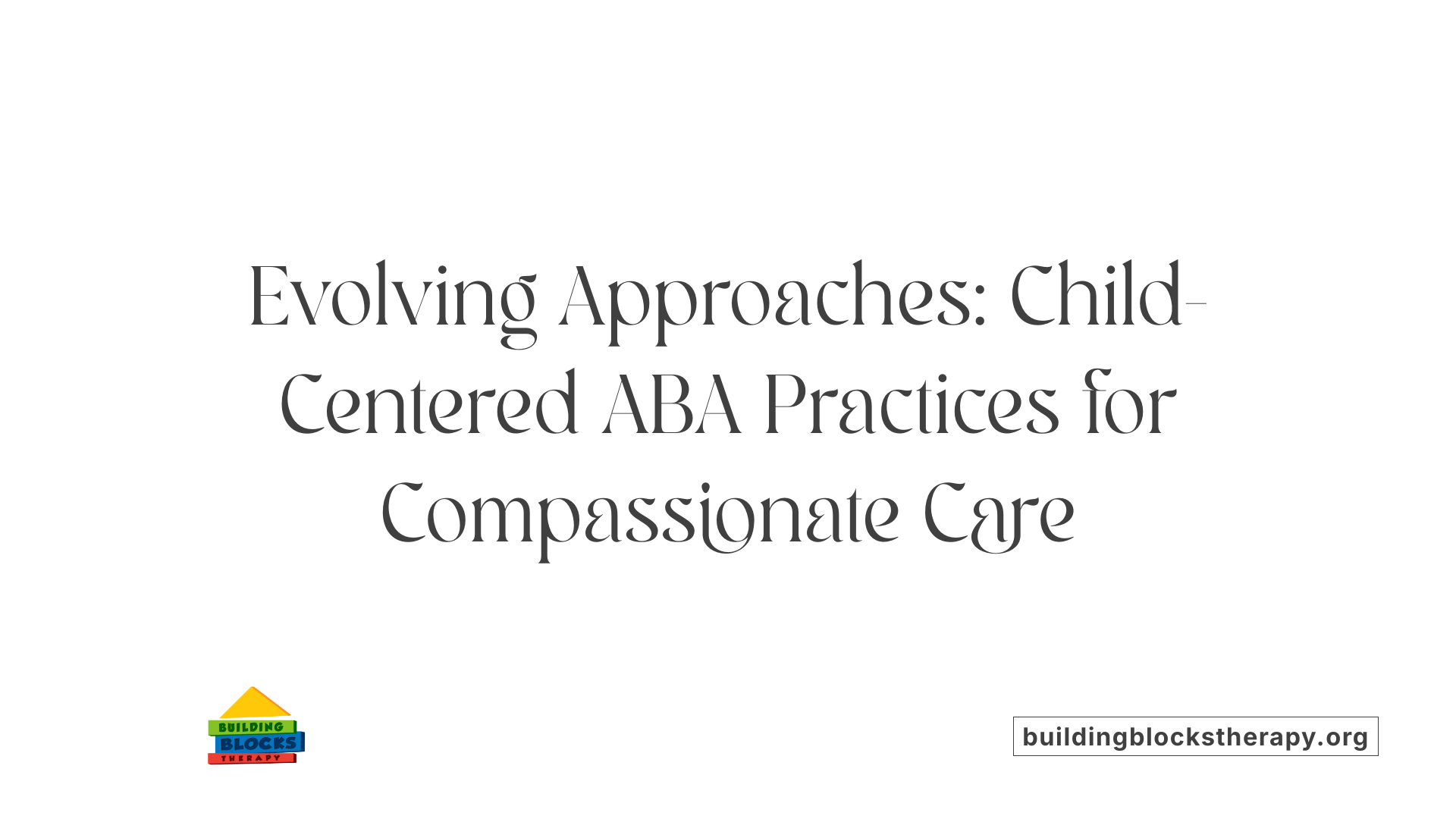How Therapy Can Help with Speech and Language Development in Young Children
Unlocking Communication: The Role of Therapy in Early Childhood Development

The Critical Early Years for Speech and Language Growth
Speech and language development lays the foundation for effective communication and social interaction in young children. For children with autism spectrum disorder (ASD), therapy plays a vital role in supporting these skills. This article explores how specialized therapies, particularly Applied Behavior Analysis (ABA) and speech-language therapy, help foster communication abilities in young children, highlighting evidence-based practices and multidisciplinary approaches that promote meaningful developmental gains.
Understanding ABA Therapy: Foundations and Applications in Autism Support

What is Applied Behavior Analysis (ABA) therapy and how is it used to support individuals with autism?
Applied Behavior Analysis (ABA) therapy is a science-based treatment that focuses on learning and behavior to help individuals with autism develop essential skills. It aims to increase positive behaviors like communication, social skills, and academic abilities while decreasing behaviors that hinder learning or safety. ABA uses systematic approaches to analyze the relationship between antecedents, behaviors, and consequences—known as the ABC model—to understand why behaviors occur and how to encourage desired alternatives.
History and Scientific Basis of ABA
ABA has been studied and used since the 1960s and is recognized by authoritative bodies such as the US Surgeon General and the American Psychological Association as an evidence-based best practice. Research highlights that long-term, intensive ABA therapy (typically 25-40 hours per week over 1-3 years) improves intellectual functioning, language development, and daily living skills in children with autism. This strong scientific foundation supports ABA’s role in autism intervention.
Techniques Used in ABA Including Positive Reinforcement and the ABC Model
A core ABA technique is positive reinforcement, where desired behaviors are encouraged by rewards such as praise, toys, or access to preferred activities. ABA breaks down skills into manageable steps, teaching new abilities like requesting more time instead of expressing frustration through yelling. The ABC model (Antecedent-Behavior-Consequence) helps therapists analyze what happens before and after a behavior to guide effective intervention.
Role of BCBAs and Therapists in Delivering ABA
Board Certified Behavior Analysts (BCBAs) design and oversee personalized ABA programs targeting communication, social skills, self-care, and academics. They collaborate with Registered Behavior Technicians (RBTs), caregivers, and other therapists to ensure consistent implementation across settings. This multidisciplinary approach promotes generalization of skills, making improvements function across home, school, and community environments.
By integrating structured methods like discrete trial training and naturalistic approaches such as Pivotal Response Treatment, ABA therapists create comprehensive programs that address each child’s unique needs to foster independence and enhanced quality of life.
Qualifications and Expertise Behind ABA Therapy Providers

Who typically provides ABA therapy and what qualifications do they have?
ABA therapy is typically administered by licensed professionals, primarily Board Certified Behavior Analysts (BCBAs) and trained therapists such as Registered Behavior Technicians (RBTs).
Educational and Certification Requirements
To become a BCBA, candidates must earn a master's degree in applied behavior analysis, psychology, education, or a related discipline. They also complete between 1,500 and 2,000 hours of supervised field experience before passing a rigorous certification exam. Maintaining their license involves continuous education and adherence to professional ethical standards, with renewal cycles usually every two years.
Skills Essential for Effective ABA Delivery
Successful ABA providers demonstrate strong active listening and observational skills, alongside critical thinking and empathy. Adaptability is key, as therapists tailor treatments to each child's unique needs, crafting individualized plans that include behavioral and communication goals.
Importance of Ethical and Evidence-Based Practice
ABA professionals strictly follow ethical guidelines and evidence-based methodologies to ensure effective and responsible treatment. This approach builds trust with families and supports positive, measurable outcomes for children receiving therapy.
Core Principles and Techniques of ABA Supporting Language Skills
What are the core principles and techniques used in ABA therapy for autism?
Applied Behavior Analysis (ABA) therapy centers around foundational principles like positive reinforcement and a clear understanding of the Antecedent-Behavior-Consequence (A-B-C) model. This data-driven approach enables therapists to observe what triggers a behavior, the behavior itself, and the outcome, guiding informed interventions.
Positive reinforcement and data-driven interventions
Positive reinforcement is a cornerstone of ABA. When a child exhibits a desired behavior like using words to make requests, they might receive praise, access to toys, or preferred activities. This encourages repetition of helpful language behaviors, building communication skills incrementally. ABA therapists continuously collect data on these behaviors to track progress and adjust strategies.
Task analysis and discrete trial training
Complex language and communication tasks are broken down into smaller, manageable steps through task analysis. Discrete Trial Training (DTT), a highly structured method within ABA, teaches these steps systematically. For example, a skill such as asking for "more time" instead of yelling is taught through repeated, focused practice trials, reinforcing success and shaping behavior.
Naturalistic teaching methods such as Pivotal Response Treatment
Beyond structured techniques, ABA incorporates naturalistic methods like Pivotal Response Treatment (PRT), which focus on pivotal areas such as motivation and self-initiation. PRT happens in more natural settings—like play—encouraging spontaneous communication and generalizing language skills beyond therapy sessions.
Functional Behavior Assessments and individualized planning
Behavior analysts (BCBAs) conduct Functional Behavior Assessments (FBAs) to understand why a child displays certain behaviors. This informs an individualized therapy plan tailored to improve communication alongside social and academic skills. Targeting the specific reasons for behaviors enables more effective interventions.
These combined core principles and varied techniques make ABA an evidence-based, adaptable, and impactful therapy for enhancing language and communication outcomes in children with autism.
Effectiveness of ABA Therapy and Multidisciplinary Support for Speech Development
How effective is ABA therapy in improving outcomes for individuals with autism?
Applied Behavior Analysis (ABA) therapy is a highly supported approach for improving outcomes in children with autism. Research consistently shows that intensive and long-term ABA therapy — typically 25 to 40 hours per week over 1 to 3 years — enhances intellectual functioning, language development, daily living skills, and reduces challenging behaviors.
Research evidence on ABA outcomes
Studies demonstrate that ABA's positive reinforcement methods and the structured 'Antecedent-Behavior-Consequence' model help children learn new skills effectively. While the overall effect sizes on language development are small to moderate, improvements are especially notable in expressive language. Children with higher language skills before treatment tend to benefit more, and interventions involving clinicians alongside caregivers yield better results than caregiver-only programs. ABA's evidence-based status is affirmed by professional organizations such as the US Surgeon General and the American Psychological Association.
Improvements in communication and social skills
ABA techniques support gains in communication and social skills by breaking complex skills into manageable steps and encouraging positive behaviors. Specialized techniques within ABA, like Discrete Trial Training and Pivotal Response Treatment, systematically teach communication. These methods, often combined with naturalistic strategies such as the Early Start Denver Model, help children improve social interaction, language use, and even nonverbal communication through tools like the Picture Exchange Communication System (PECS).
Benefits of combining ABA with speech therapy
Integrating ABA with speech therapy creates a comprehensive, multidisciplinary approach to language development. Speech therapists focus on articulation, oral-motor skills, language pragmatics, and augmentative communication methods. In contrast, ABA therapists promote functional communication behaviors and reduce barriers to learning. Close collaboration ensures consistent reinforcement and skill generalization across home, school, and therapy settings, leading to stronger progress in speech, social skills, and behavior.
Impact of therapist and caregiver involvement in interventions
Interventions delivered by clinicians or jointly with caregivers have a stronger impact than those led by caregivers alone. Therapist involvement ensures expert guidance in applying ABA principles and speech techniques, while caregiver participation promotes consistency and generalization of learned skills. This team approach improves the child’s ability to transfer skills to everyday environments and enhances overall developmental outcomes.
| Aspect | Details | Impact on Language Development |
|---|---|---|
| ABA Intensity | 25-40 hours/week for 1-3 years | Significant gains in intellectual & language functioning |
| Intervention Approach | Structured trials and naturalistic methods | Improved expressive language and social communication |
| Therapist Involvement | Clinician-only vs. clinician + caregiver vs. caregiver-only | Larger effects with clinician involvement |
| Multidisciplinary Combination | ABA + Speech Therapy | Holistic development and better skill generalization |
Overall, ABA therapy combined with speech therapy offers a robust, evidence-based pathway to support children with autism in developing vital communication and social skills effectively.
Collaborative Therapy Approaches: ABA and Speech-Language Pathology

What Roles Do Speech Therapists and Behavior Analysts Play?
Speech-language pathologists (SLPs) primarily focus on improving a child's speech articulation, language comprehension, social communication, and oral-motor planning. They evaluate and choose augmentative and alternative communication (AAC) tools like picture exchange systems or speech-generating devices for nonverbal children. Behavior analysts (BCBAs) concentrate on teaching functional communication, reducing interfering behaviors, and promoting desired learning behaviors using strategies such as positive reinforcement and breaking skills into manageable steps.
How Is Augmentative and Alternative Communication (AAC) Used?
AAC systems, including tools like the Picture Exchange Communication System (PECS), are critical for children with limited verbal communication. Speech therapists typically lead the assessment and selection of the AAC methods best suited to a child's needs. ABA therapists then reinforce the consistent use of these tools across various routines and settings, helping ensure the child acquires and generalizes communication skills effectively.
How Are Goals Set and Skills Generalized Through Collaboration?
Collaborative goal setting between SLPs and BCBAs is essential to align therapy objectives, making interventions more effective. Joint planning facilitates the integration of communication, social, and behavioral goals, allowing for consistent support across home, school, and clinical environments. This teamwork encourages generalization of skills such as turn-taking, understanding nonverbal cues, and functional language use, enhancing children's ability to apply learned behaviors broadly.
What Are the Benefits of Integrated Multidisciplinary Care?
Combining ABA with speech therapy provides a comprehensive approach addressing multiple developmental areas concurrently. Integrated care improves outcomes in communication and behavior, enhances social interaction skills, and increases independence. It also leads to greater satisfaction for children and caregivers by ensuring therapies are tailored and coordinated, promoting a seamless learning process and supporting holistic development.
Complementary Therapies Enhancing Speech and Language Development

Occupational Therapy and Sensory Integration
Occupational therapy plays a vital role in helping children with autism develop essential daily living skills. It often includes sensory integration therapy, which focuses on improving a child's response to sensory input. This can have a positive impact on communication and social interaction by allowing children to better process sensory information that might otherwise overwhelm or distract them.
Developmental Approaches: Early Start Denver Model (ESDM)
The Early Start Denver Model is a developmental approach rooted in ABA principles and designed for children aged 12 to 48 months. This model emphasizes naturalistic activities like play and shared attention to foster improvements in language and social skills. Its use of engaging, child-led interactions makes it an effective strategy for promoting early communication development.
Social-Relational Methods: DIR/Floor Time and Social Stories
Social-relational approaches such as DIR/Floor Time focus on building emotional connections and enhancing social skills critical for effective communication. Social stories are another valuable tool that help children understand and navigate social situations, thus improving their ability to use language and interact appropriately with others.
Educational Treatments Supporting Communication
Programs like the TEACCH approach emphasize visual learning and structured routines, supporting communication development in children with autism. These educational interventions help create predictable environments that facilitate understanding and use of language, aiding in smoother communication.
Together, these complementary therapies support a multidisciplinary approach essential for fostering comprehensive speech and language development in children with autism. Each method addresses different facets of development, reinforcing communication growth alongside behavioral interventions.
Addressing Criticisms and Enhancing ABA Practice for Child-Centered Care

What challenges or criticisms exist regarding ABA therapy?
Although Applied Behavior Analysis (ABA) therapy has demonstrated effectiveness in enhancing communication, social skills, and reducing harmful behaviors among children with autism, it has encountered significant criticisms. Traditional ABA methods, such as Discrete Trial Training (DTT), are sometimes viewed as overly structured and repetitive. This rigid, task-oriented style has been criticized for not always accommodating individual differences or being stressful for some children.
Critics also contend that earlier ABA programs prioritized behavior elimination over fostering skill development or honoring a child's unique strengths and preferences. This could lead to interventions that felt impersonal or ignored the child's natural ways of learning and expressing themselves.
How is ABA therapy evolving to address these criticisms?
In response to these concerns, modern ABA has progressively shifted toward more naturalistic, play-based, and person-centered approaches. Techniques now commonly emphasize engaging children in meaningful activities that promote independence and build on their interests. This evolution is deeply rooted in respecting neurodiversity—the understanding that neurological differences are a natural and valuable part of human diversity.
Contemporary ABA practice integrates ethical considerations by tailoring interventions to honor each child's preferences and comfort levels. Therapists aim to create supportive environments where children feel understood and motivated, rather than merely compliant.
Ethical considerations and best practices in modern ABA
Modern ABA practitioners prioritize collaboration with families and caregivers, ensuring therapy goals align with the child's overall well-being. Ethical practice involves continual assessment and adaptation of strategies to be flexible and respectful of individual needs. This shift aligns ABA more closely with multidisciplinary care, combining behavioral, developmental, and educational approaches.
This integrated, child-centered focus underlines ABA's commitment to not just changing behaviors but supporting the holistic growth of every individual. Practitioners and advocates maintain that, despite past criticisms, contemporary ABA is evolving into a compassionate, effective intervention that embraces diversity and aims to empower children on the autism spectrum.
Fostering Communication Through Informed Therapeutic Choices
Therapy plays a pivotal role in supporting speech and language development in young children, particularly those with autism spectrum disorder. Applied Behavior Analysis (ABA) stands out as an evidence-based approach that, when individualized and thoughtfully delivered, builds foundational communication skills while addressing behavioral challenges. Its effectiveness is enhanced significantly when integrated with speech therapy and other developmental supports within a multidisciplinary framework. Though ABA therapy has faced criticisms, evolving practices increasingly prioritize naturalistic, child-centered interventions that respect each child's unique profile. By embracing collaborative and holistic therapeutic models, caregivers and professionals can create nurturing environments that empower young children to reach their full communicative potential and thrive socially and academically.
References
- Applied Behavior Analysis (ABA)
- Intervention Effects on Language in Children With Autism
- Treatment and Intervention for Autism Spectrum Disorder
- Combining ABA With Speech Therapy
- Applied Behavior Analysis and Communication Services
- Maximizing Outcomes: How Speech and ABA Therapy ...
- The effectiveness of applied behavior analysis program ...
- The Controversy Around ABA
- Applied Behavior Analysis (ABA)
- 6 Benefits of ABA Therapy for Children with Autism





